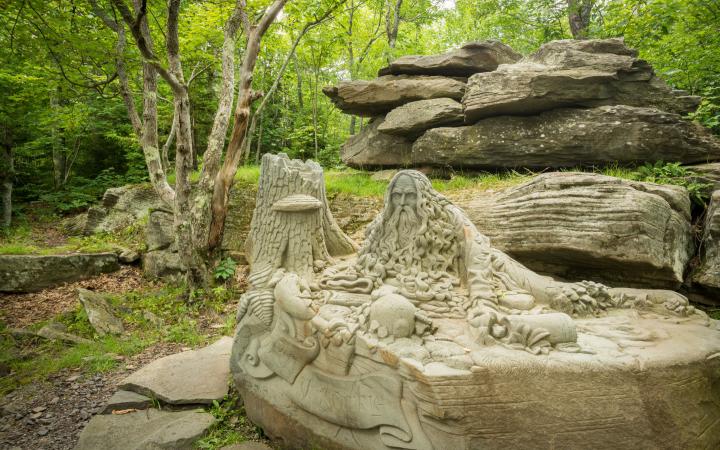Washington Irving
The Father of the American Ghost Story
An essayist, author, historian, and diplomat, Washington Irving is perhaps best known for his short stories featuring the barely civilized wilderness along the Hudson River. His famous tales, The Legend of Sleepy Hollow and Rip Van Winkle conjure an early time in American history, one where towns and villages still sat at the edge of vast, intractable land, and superstitions loomed big among the hemlock forests and rolling farmland.
Irving once said that the Catskill Mountains bewitched his boyish imagination, inspiring the gothic-tinged tales that captivated readers with his descriptions of rocky trails, and dramatic cloves set deep in the Catskill Mountains.
Becoming “The First American Man of Letters”
Born in New York City in April 1783 and named after George Washington, the soon-to-be president renowned as the hero of the American Revolution, Irving had 10 brothers and sisters. Though he studied law, it seems that early on in his life, Irving was first and foremost a passionate writer crafting essays for periodicals and whimsical travel journals about his exploits in Europe.
In 1815, Washington traveled to England where he met Sir Walter Scott, who encouraged him to continue writing. Irving began writing a series of stories and essays under the nom de plume “Geoffrey Crayon.” The collection, titled: The Sketch Book, included the story of Rip Van Winkle, a kind-hearted but languid man whose wife so hen-pecked him, he would retreat into the forests and mountains surrounding his home daily. On one such venture into the Catskill Mountains, he met with a party of strangely dressed men playing ninepins and drinking ale. Sneaking a few tankards himself, he soon fell into a deep sleep. Upon waking, he found that years had passed; colonies were now states formed by revolution, his children were grown and his wife dead.
The tale conjured the landscape of the Catskills with such bewitching clarity; readers could almost smell the freshness of the summer day which greeted Rip after his long slumber. Washington’s descriptions of the mountains were as inviting as Rip’s story, helping to promote early travel to the area.
While The Sketch Book of Geoffrey Crayon, Gent, featured stories inspired by Irving’s travels abroad, several stories took place in America, but owe their roots to German folktales. This includes the tale of Rip Van Winkle and a little story titled The Legend of Sleepy Hollow whose protagonist, a lanky schoolteacher by the name of Ichabod Crane, would rise to fame thanks to Irving’s literary aspirations and the acting of Johnny Depp in the 1999 film directed by Tim Burton.
Originally published in 1819 in America and England, where Irving was living at the time, The Sketch Book was revised by the author several times over the course of decades. Ichabod Crane and Rip Van Winkle became central characters in the history of the Catskills and Hudson Valley. In the late 1990s North Tarrytown, the village haunted by the specter of a headless horseman was renamed Sleepy Hollow in honor of Irving’s short story.
Irving’s Lasting Legacy: Beyond the Story
Irving’s success with The Sketch Book earned him international fame as one of the newly minted nation’s first American man of letters. He went on to work in American politics, was a friend to foreign ministers and American Presidents, and served as Minister to Spain from 1842-1846.
He continued to write, publishing novels and non-fiction books about George Washington and Christopher Columbus, the American West, and Granada.
Irving died of a heart attack in 1859.
 >
>Rip Van Winkle
Washington Irving's famous sleepy character, Rip Van Winkle, is known the world over for his long nap in the Catskills.




